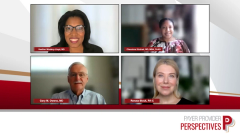
Economic Impact of Vitiligo in the United States
Gary M. Owens, M.D., discusses the economic costs associated with vitiligo and the impact this disease has had on the U.S. health care system in general.
Episodes in this series

Dr. Heather Woolery-Lloyd: Now I want to change gears a little bit and talk about the impact of vitiligo on the U.S. health care system in general. (Dr. Owens), can you tell us a little bit more about the economic costs associated with vitiligo?
Dr. Gary M. Owens: Yes, I can. I can tell you there is a lot that we don’t know about the economic costs of vitiligo. There was a 2018 analysis that went through all the known literature that (the authors) could find. They found exactly two studies on the economic cost of a vitiligo. Actually, in 2004, that one study identified only about $15 million in cost in the U.S. We know that’s probably dramatically understated, partly because it’s very difficult prior to the first approved drug for vitiligo in 2002 to track the cost because most treatments were off label and (it is) almost impossible to track the cost when you have something like corticosteroids that have a myriad of uses. The American Academy of Dermatology published a Skin Disease brief in 2017 that upped that cost to about $49 million, which again I think is very much understated, but they compared it (with) skin infections, which was a whopping $8.1 billion. If you compare that (with) the big three diseases, cancer at $200 billion, diabetes at $237 billion and cardiovascular disease at $320 billion, I think what we’re seeing here is that we don’t know the cost of vitiligo, and it may have a little problem getting attention just because it gets lost in some of those what I will call the thousand-pound-gorilla diseases that we’re looking at.
Dr. Heather Woolery-Lloyd: That’s such a great point, because vitiligo is something that is very difficult to track because prior to the FDA approval of some newer medications, this was something that was treated completely off-label. I do think there (are) some real challenges, as you mentioned, with tracking the economic impacts of vitiligo.
Dr. Gary M. Owens: Right. Literally, no one is doing a lot of economic analysis. Probably room for future research, especially as we get more approved therapies out there.
Dr. Heather Woolery-Lloyd: Yes, I think that is exciting, and I love that we do have this interest, this new interest in vitiligo, because I think it’s a disease that has been “forgotten” for a while or maybe even ignored. This is exciting that we will get more data to understand economic impacts in the future.
Transcript edited for clarity.
Newsletter
Get the latest industry news, event updates, and more from Managed healthcare Executive.



















































